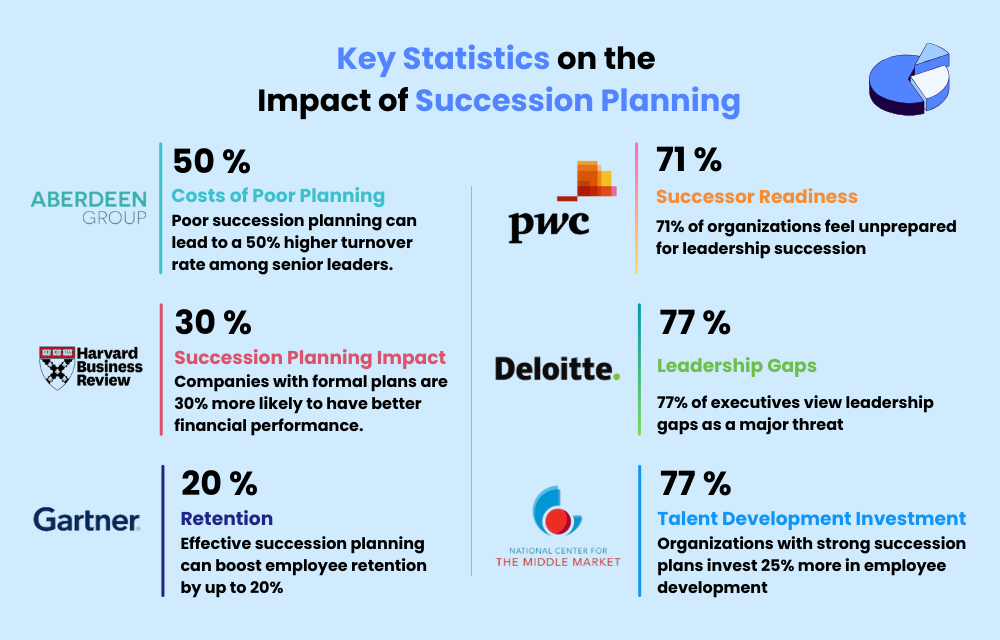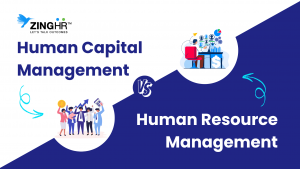Imagine you’re leading a team where all your employees thrive and contribute to your organization’s growth.
That’s exactly what an effective performance management system can help you achieve.
Because, when we talk about performance management in HRM, we’re not just talking about appraisals, promotions, and employee reviews, it’s something above and beyond that as well.
Performance management is one of the key aspects of Human Resource Management (HRM).
It helps organizations align employee goals according to the company’s goals and objectives. It is a continuous process that ensures employees’ performance contributes to the organization’s overall growth and success.
This blog by ZingHR has been created to help you understand the importance of performance management, its process, how it works, and what kind of tools and strategies can help you streamline your organization’s performance management system. So let’s dive deep into it without wasting any more time.
What is Performance Management?
An continuous, ongoing process of communicating and clarifying job responsibilities, monitoring, executing and planning that optimizes individual goals with organizational objectives.
Why is Performance Management Important to HR?
Performance Management in HRM is much more than a process, it’s the engine that keeps your organization competent and drives it forward. When done right, performance management boosts productivity and employee growth, eventually helping your organization retain top talent.
One of the key strengths of performance management is that it aligns individual goals with broader organizational goals. This makes everyone feel a part of the bigger picture, helping them realize that their contributions mean something to the organization and directly impact its success.
Think of it like a map that guides people on how to move in the right direction i.e. where the organization is headed and wants to be.
Regular feedback is a crucial part of performance management, this builds trust, transparency, and communication between the people in the organization. Because, ultimately the goal of performance management is not let people know how they’re performing, but also to help them grow in their roles.
It builds a culture that values progress and celebrates it, making the employees feel satisfied and motivated. And if the employees feel satisfied, it boosts the organisation’s retention rate, which is always a good sign.

1. It Aligns Individual Goals with Organizational Objectives
Performance management consists of constructive communication between the organization, the HR, and the employee, this ensures that the employee’s individual contribution are aligned to the organization’s overall goals and objectives. This process ensures the employee and the organization are growing in a unified direction.
Image source: ZingHR Goals Setting
2. Improves Communication Between Employees and Managers
Regular conversations, check-ins, and appraisals create opportunities for constructive feedback and open discussions between the employer and the employee. This leads to a transparent environment and work culture that ensures clarity and promotes growth.
3. Supports Talent Management and Succession Planning
Performance management also helps organizations identify high-potential employees who can lead the organization in the future. This is great for the organization’s succession planning, helping you secure the tomorrow of your business, today.

4. Encourages Accountability and Responsibility
When employees know that their performance is regularly monitored and analyzed, it’s likely for them to take on more responsibility for their actions. This leads to a culture of being accountable for your responsibilities, which turns good employees into great employees.
5. Provides Data for HR Decision-Making
Data always helps in analyzing critical performance metrics, it can influence vital decisions like appraisals, promotions, terminations, and much more. Not just that, it also helps identify issues that may need to be taken care of.
5 Performance Management Process for Success
The PMS process in HR generally involves 5 important stages, every stage plays a critical role in developing a water-tight performance management system that leads to a high-performing team:
1. Planning
In the initial stages of the performance planning process, HRs and managers generally work together with the employees to establish goals and objectives for the employees. These goals are generally in line with the long-term goals of the organization.
2. Monitoring
Regular monitoring and tracking of employee performance makes sure that the progress is in line with the organizational objectives. Continuous monitoring also helps the organization identify any issues or difficulties early on so that they can find a quick solution without any hassle.
3. Developing
Encouraging employee growth and fostering their development is one of the most crucial aspects of a robust performance management system. Because employee growth is also essential for organizational growth. So helping your employees develop by providing them with training and development programs is a very important thing for you to ensure continuous growth and development.
4. Rating
The main objective of performance management is to monitor your employees, develop them, and rate them to see whether the development phase has led to a positive change in their performance or not. Formal evaluations consist of rating the employee performance it’s a critical part of the process that helps you make important decisions regarding your employees.
5. Rewarding

Recognizing and rewarding your employees based on their performance is very important when it comes to motivating them and eventually retaining them in the long run. You can reward excellent performances in the form of appraisals, promotions, perks, etc.
5 Types of Performance Management In HRM
Like with most other processes, there are different types of approaches when it comes to performance management, and they come with their own unique features and benefits. Let’s take a look at a few different types of performance management techniques used by HR professionals across industries.
1. Traditional Performance Appraisals
In this method, performance appraisals are usually done via annual assessments of the employee’s performance. While this technique is still quite popular with many organizations, they are criticized by some for being too old as well as a method that focuses more on past performance than current performance.
While this method gives a sense of an employee’s performance over the year, it may miss out on a few specific points that may help improve their performance and the organization’s output. Think of it as someone waiting for an annual health checkup instead of making small changes in their lives from time to time to stay healthy.
Here’s a Comparison Table of Traditional vs. Modern Appraisal
| Aspect | Traditional Appraisal | Modern Appraisal |
|---|---|---|
| Focus | Primarily on past performance and tasks completed. | Focus on future potential, growth, and continuous improvement. |
| Frequency | Annually or bi-annually. | Ongoing feedback and real-time assessments. |
| Evaluation Criteria | Mainly quantitative, focusing on numbers (e.g., sales). | Both quantitative and qualitative (e.g., skills, behavior, growth). |
| Goal Setting | Often unclear or rigid. | SMART goals, clear and flexible. |
| Feedback Type | One-way, manager to employee. | 360 feedback from colleagues, managers, and subordinates. |
| Employee Involvement | Minimal, mostly manager-driven. | High, collaborative goal-setting and self-assessment. |
| Appraisal Tools | Paper-based forms or spreadsheets. | Digital tools, HRMS, and performance tracking software. |
| Rewards and Recognition | Primarily monetary (e.g., bonuses). | Recognition can be non-monetary, such as public recognition or development opportunities. |
| Bias and Subjectivity | High risk of bias and favoritism. | Reduced bias through data-driven insights and 360-degree feedback. |
| Adaptability | Less adaptive, more static. | Adaptive to changing goals, dynamic business environments. |
| Training and Development | Often neglected or separate from the appraisal process. | Integrated with learning and development opportunities. |
2. Management by Objectives (MBO)
This is a collaborative strategy wherein employees and managers come together and set specific, definite goals and objectives to be achieved in the short and long term. Once the objectives have been set collaboratively, the employees are then judged based on their ability to achieve these goals and objectives.
For example, in this method an HR, a sales employee, and a sales manager sit together to set a goal i.e. “Increase sales by 15% by the end of this financial year.”. Now the ball is in the employee’s court to go out and achieve the target. Over the year, the manager monitors the employee’s performance and evaluates them based on it.
The table outlines the key components of an action plan and provides a structured framework for defining tasks, allocating resources, and monitoring progress.
| Action Planning Steps | Solution |
|---|---|
| Define Clear Actions | Break down goals into concrete, tangible activities that employees may take to attain them. |
| Set Realistic Timelines | Set realistic deadlines for each phase to keep the action plan on track. |
| Allocate Resources | Ensure that workers have access to the tools, training, and assistance they require to do their responsibilities. |
| Assign Responsibilities | Clarify who is responsible for each action item to encourage responsibility and ownership. |
| Monitor Progress | Conduct frequent evaluations to assess how the action plan is being carried out. |
| Adjust as Needed | Be adaptable and willing to revise the strategy if obstacles occur or priorities change. |
| Set Milestones | Include intermediate goals to track employee progress and recognize little victories along the way. |
| Incorporate Feedback Loops | Allow ongoing feedback from managers and peers to optimize performance. |
3. Behaviorally Anchored Rating Scales (BARS)
BARS focuses on specific metrics that lead to success in a certain role or department. It’s a deeper and more thorough process when compared to typical appraisals. It provides explicit guidelines on what’s expected of the employees.
Imagine your HR manager rating an employee’s ability based on their ability to communicate in meetings. BARS breaks down this skill assessment into specific factors like maintaining eye contact, articulating thoughts, being to the point, offering solutions, etc. This PMS process makes the evaluation more precise based on your employee’s skills.
The below table shows how this method can improve evaluation accuracy, enhance feedback quality and support employee development.
| Action Planning Steps | Solution |
|---|---|
| Improved Accuracy | BARS provide an accurate evaluation approach by tying ratings to particular, observable behaviours, decreasing subjectivity and bias. |
| Enhanced Feedback Quality | Using behavioural examples, managers may deliver focused and constructive feedback to workers, allowing them to identify areas for improvement. |
| Consistency Across Evaluations | Use predefined behavioural anchors guarantees that all employees are evaluated using the same criteria, which promotes fairness and consistency. |
| Motivates Performance Improvement | By assigning employees defined behavior-based goals, BARS motivates individuals to acquire particular skills and behaviours that maintain consistency with business goals. |
| Supports Developmental Plans | BARS assist in the building of individual growth strategies and training programs to target specific employee needs. |
4. Balanced Scorecard
The balanced scoreboard method evaluates employees based on many things, not just what their output is. It considers things such as goals for customer service, learning, upskilling, growing, and internal processes.
Think of this technique as a comprehensive method. For example, your employee’s performance will be evaluated not just on their ability to meet the sales targets but also on how they interact with customers, how they work in a team, and how seriously they pursue personal growth.
This method not only focuses on achieving targets but equally focuses on the overall growth of your employees, leading to qualitative improvement of your workforce.
Here’s how the balanced scorecard method improves employee evaluation and organizational effectiveness.
| Action Planning Steps | Solution |
|---|---|
| Identifying Gaps | Helps businesses to identify areas where performance may be weak, allowing them to address problems and build up improvement plans. |
| Holistic View | Balanced evaluation of financial, operational, and strategic performance. |
| Strategic Alignment | Aligns individual and team objectives with the company’s goals, ensuring that everyone is working toward the same mission and vision. |
| Culture Improvement | Promotes a culture of improvement and responsibility, encouraging individuals to prioritize personal and professional development. |
| Enhanced Decision-Making | Provides data-driven insights, and allows employees to make more informed and strategic decisions that promote corporate success. |
5. Self-Assessments
This method has become increasingly popular these days as many organizations have started adopting it. In this method, you encourage your employees to evaluate their own performance. This builds a culture of accountability, responsibility, and self-awareness. Not just that but it also gives valuable insights to the managers about the employees during the review process.
Picture a scenario where your employees are assessing themselves. This allows them to take time, look at their own performances over the past few months, identify their strengths and shortcomings, and much more.
If done honestly, these self-assessments often lead to powerful insights that can boost the employee’s personal growth journey. Furthermore, it also makes it easier for you and the respective managers to not only evaluate the employee’s performance but also their integrity and mentality.
A below table that outlines their key benefits:
| Action Planning Steps | Solution |
|---|---|
| Take Ownership | Self-assessments encourage employees to accept responsibility for their development and performance. |
| Identify strengths and Weaknesses | Employees who reflect on their work might identify their strengths and areas for growth and allow for specific development. |
| Build Trust | Involving employees in the evaluation process develops an open and trustworthy connection between employees and management. |
| Encourages Goal Setting | Self-assessments assist employees in setting realistic and achievable goals that are aligned with company objectives. |
5 Key Features of Performance Management Software
Now that we know a few things about performance management systems, let’s dive into what makes these systems truly work. Think about these systems like a toolkit that helps you make sure that everyone is not only meeting your expectations but also growing and excelling in their roles, eventually contributing to the organization’s success. Every component of your performance management system plays a key role in this, I’ll break it down for you in the points below.
1. Approaches – KRAs & KPIs
Generally, performances are tracked based on Key Responsibility Areas (KRAs) or Key Performance Indicators (KPIs) using balanced scorecard methods. This ensures that you have a balanced and well-rounded view of your employee’s contribution to the organization.
Let me make it easy for you with a simple example, imagine a customer service representative whose KRA is to improve service quality. To measure this, their KPI could be something along the lines of “reducing response time by 12%”. This method gives them clarity about what needs to be done and what their performance will be evaluated on.
This is about numbers, but a Balanced Scorecard goes beyond numbers like response time, grievance-solving ratio, etc. It factors in qualitative things like customer satisfaction.
So all in all, when you combine these approaches, you get a qualitative and quantitative metric for evaluation. It’s like evaluating a contestant on Masterchef not just by how quickly they cook but also by how delicious the dish is, both speed and quality matter.
Image source: ZingHR KRA KPI
2. Competency Framework & 360-Degree Feedback
Performance evaluations can be more comprehensive with tools like competency frameworks and 360-degree feedback. These approaches incorporate feedback from multiple sources to give you a well-rounded assessment of employee performance.
Picture a software engineer who works in multiple teams within your organization.
Generally, a software engineer gets feedback from their direct manager, but since this person is working in multiple teams, one single manager can’t perform a fair evaluation.
This is where 360-degree feedback comes into play, it gathers feedback from managers, juniors, and even peers to give you a well-rounded view of the employee’s performance. This way you can evaluate the strengths and the areas that need improvement with more clarity.
3. Data Insights, Dashboards, and Analytics
Performance Management System tools generally include detailed dashboards and analytics. These tools are designed to help you get real-time insights into your employee’s performance. So basically, your HR can make data-driven decisions thanks to tools like these.
Think of a Performance Management System’s dashboard as a control room. It gives you a bird’s-eye view of every employee’s performance data. And with this data in front of you, making decisions becomes much easier.
4. Flexibility & Automation
Advanced Performance Management Systems provide flexibility to you and your HR department. This helps you tailor your performance management system based on your organization’s needs and requirements.
For example, think you want custom performance review forms for the different teams or departments in your organization, or you want to set up automatic reminders for reviews.
A good performance management system can make this possible. Just like your very own virtual assistant, the system takes care of all these things and makes sure that your organization runs smoothly without you needing to put in extra time and effort into these things.
5. Global Tools
5.1 Multilingual App
In multi-national or global companies, you have teams that are spread across countries and speak different languages. This can make performance management quite a tricky process for you. What can make your and your employees’ lives easier is having a multilingual app wherein employees from different countries can easily access the system without any language barrier.
So an employee from India, Spain, China, Russia, or any other country that your organization operates in, can seamlessly access the system without it affecting their productivity.
5.2 Bell Curve & 9-Box Grid
Tools like Bell Curve and 9-Box Grid help are designed to help you categorize employees for easier identification and evaluation. These help you identify and categorize top performers, mid-level performers, and those with potential for growth in the future.
Think of it as a career map of employees, showing where they currently are and where they could be in the future. This process makes it easier for you to plan for appraisals, promotions, and training.
Image source: ZingHR Bell Curve
7 Best Practices for Effective Performance Management
There’s no point in having a Performance Management System in HRM if it’s not effective enough for your organization. Now, if you want it to be truly effective, there are some best practices that you’ll need to keep in mind. Let’s take a look at them:
1. Check-ins Between Managers and Employees
Check-ins between managers and employees are one of the most crucial things in a robust performance management process. These check-ins allow you to discuss the progress as well as the challenges in real-time.
Why wait for the end of the year when you can have a quick chat every month or every quarter? This will keep you and your employee better connected and on the same page. Consequently, helping you address minor issues before they turn into huge problems for the employee and your organization.
2. Maintaining Open and Honest Communication
Open and honest communication is the key to building trust between you and your team. If you’re an employer, it’s very important that you make your employees feel comfortable enough to come and discuss challenges with you and vice versa. When your employees feel supported, they’re more likely to be motivated to perform well.
3. Help to set up SMART Goals
SMART goals i.e. Specific, Measurable, Achievable, Relevant, and Time-bound goals provide clear direction. These goals don’t leave you or your employees in a grey area, since it lays out everything clearly for your employees.
For example, instead of a goal that says “Increase sales”, a SMART goal will say, “Increase sales by 10% over the next financial year”. This gives your employees clarity about what’s expected of them and makes it easier for them to work towards a definite target rather than a vague one.
A well-defined goal-setting approach also enhances project performance, as well as employees can track their progress against specific metrics.
This approach also makes it easier for you to evaluate your employees based on their performance in achieving the targets.
4. Multiple Sources of Feedback
Multiple sources of feedback give you a 360-degree view of the employee’s performance so that you can evaluate them with full knowledge. It consists of feedback taken from managers, peers, juniors, etc. giving you a well-rounded view of the employee’s strengths but also helping you identify the areas that need improvement. For example, if you’re a leader, receiving feedback from your team and fellow leaders helps you understand and improve your leadership style in a better way.
5. Offer Flexible Working Hours
Due to the rise of remote and hybrid work over the past few years, flexibility is one of the most important things for employees today. Studies have shown that offering flexibility significantly enhances employee performance.
Imagine what a boost it will be for the employees to be able to work when and where they perform best, it will certainly spike their productivity. To maximize these benefits, organizations should implement a well-structured performance policy that not only supports flexibility for employee morale but it also leads to better performance.
6. Recognize Achievements
Generally, people forget that performance evaluation is also a positive process. As important as it is to provide constructive feedback to improve employee performance, it’s just as important to celebrate their wins. No matter how small, celebrating your employee’s achievements plays a crucial role in building a happy and motivated workforce.
Recognition can come in many forms, it doesn’t need to be something as big as promotion all the time. It can come in small forms such as public acknowledgements, additional perks, small rewards, and much more. The most important part of this is to make employees feel recognized and appreciated so that they don’t feel that they’re just a small part of a huge machinery.
7. Training & Development
Just like recognizing well-performing employees, it’s important to support employees grow. A successful performance management system does not just focus on current performance but provides opportunities for growth for future performance reviews.
Offer your employees access to training modules or skill training courses, create their career development plan, etc. These things show the employees that you’re interested in their growth and investing in them. This will make them feel valued and motivate them to repay your trust in them by growing and performing well.
Trending Features in Performance Management
Performance management continues to adapt to new challenges and technologies. Here are the key trends reshaping the way organizations evaluate and improve employee performance.
- AI, Blockchain and Automation
Technology is changing performance management. AI helps to analyse employee data and, gives you actionable insights and fair evaluations. For example, predictive analytics can identify patterns and suggest personalised development plans for employees.
Blockchain ensures data integrity and transparency, especially when storing performance records, making evaluations tamper-proof. Automation simplifies tasks like reminders for check-ins, goal-setting updates and real-time performance tracking, so managers can focus on more strategic thinking with their teams.
- Bell Curve Performance Management
The bell curve has had its critics in the past but it’s back with a modern twist.
Organisations are adapting this method to encourage healthy competition while still recognising diverse contributions. By applying the bell curve of flexibility and transparency, companies are trying to balance fairness with high-performing employees.
- Continuous Performance Tracking
Annual reviews are dead now. Companies are using tools or software to track real-time performance. This means managers and employees can address issues or celebrate achievements when they happen.
- Ambitious Goals with Measurable Results
Setting ambitious and achievable goals is the new way of performance management. With OKRs (Objectives and Key Results) companies are pushing employees to work towards goals and track progress through measurable outcomes. This focus on keeping employees motivated and gives organisations achievable results to measure success.
- Reaction, Learning, Behaviours and Results
Organisations are expanding their focus beyond immediate performance metrics to evaluate the whole employee journey.
This is in line with the Kirkpatrick Model which measures:
Reaction: How employees respond to performance management initiatives.
Learning: The skills or knowledge gained.
Behaviours: Changes in the way employees work after training or feedback.
Results: The ultimate impact on business goals.
This holistic approach means performance management isn’t just about numbers but about meaningful change.
Tools for Performance Management
I know most of us are tired of the phrase “In today’s digital world”, but we can’t run away from the truth, can we? We live in a digitally evolved world where we have a million digital tools for everything. Similarly, many performance management tools are designed to make HR’s lives easier by helping them track, assess, and develop employee performance in real-time.
A tool like the Performance Management System (PMS) module by ZingHR is a godsend for the HR department. It’s an all-in-one platform where you can set goals, track progress, and assess the performance of your employees.
Imagine a dashboard where you and the HR manager can see everything about every employee, making it easier for you to track their progress based on key objectives.
And that’s not all, this module is also designed to give you automated feedback reminders and detailed analytics, helping your HR department streamline the entire performance management process.
ZingHR’s web-based Performance Management & Appraisal system is designed to help you create a high-performance work culture that boosts the individual growth of your employees, resulting in the overall growth of your organization.
Warp Up
Performance Management is much more than just ticking boxes in a form. It’s a way to help your employees grow, project performance tracking, and eventually drive your organization’s success. When done right, performance management can be much more than just a tool to evaluate past performance. It can be a launchpad for the future growth and success of you and your employees.
In today’s dynamic business world, performance management has to evolve to keep up with the corporate evolution. So, things like personalization, technology, and flexibility will be very important in shaping a robust and streamlined PMS process in HR. A well-structured performance policy not only helps in performance tracking but also empowers your employees to reach their potential. Because that’s where the magic happens for you and for them.
So what are you waiting for? Take the next step and implement a performance management system based on all the aforementioned information and you’re good to go. Because, as they say, small changes today lead to big results over time.




